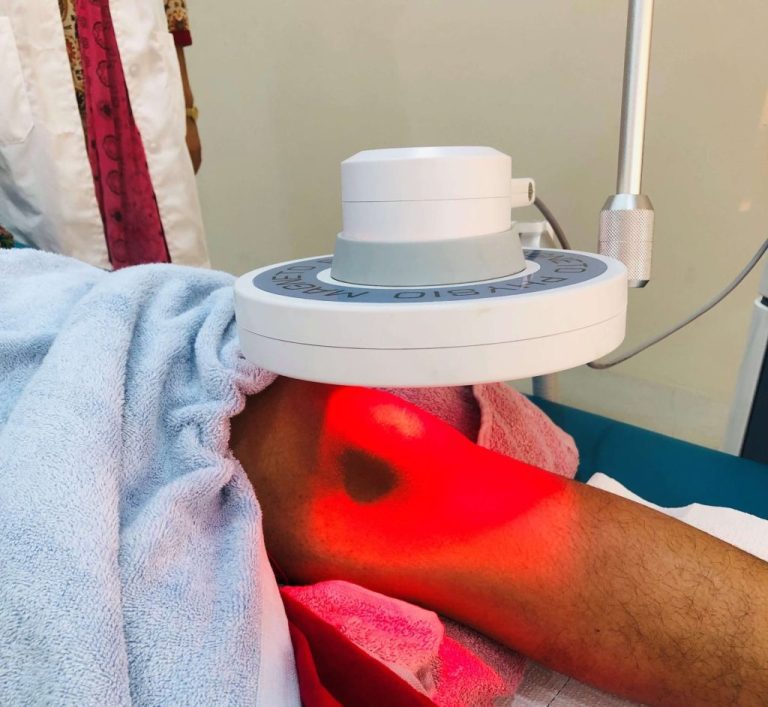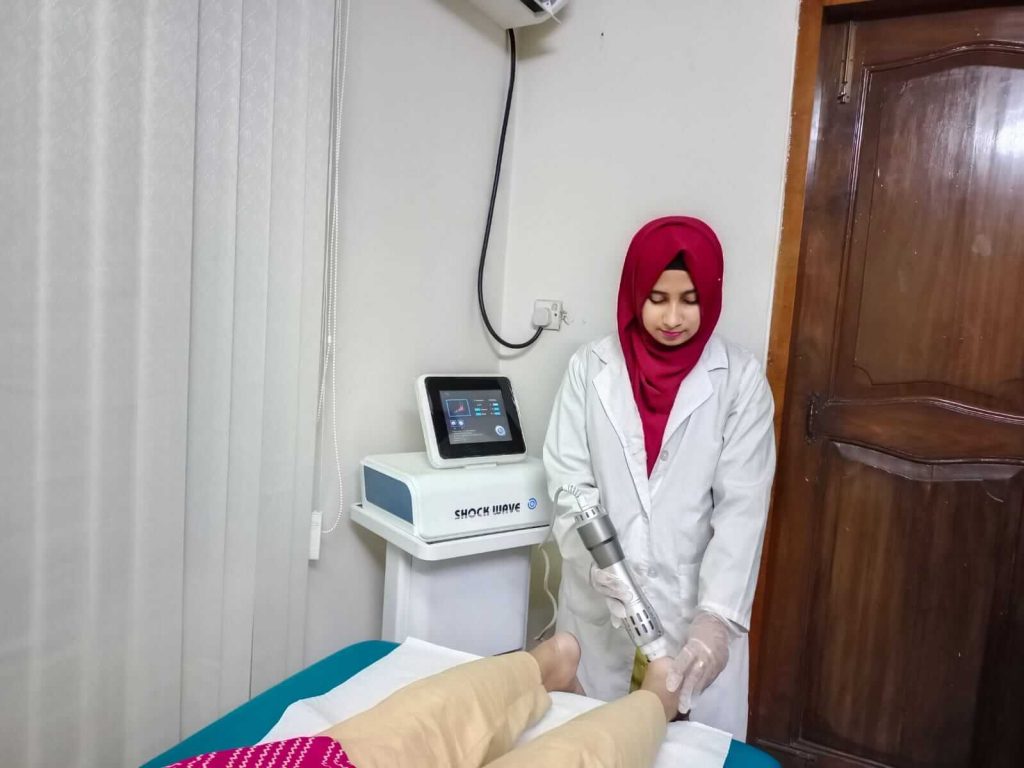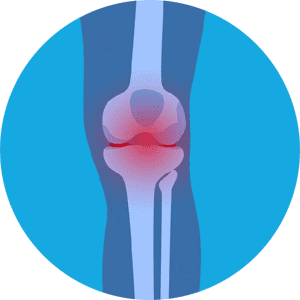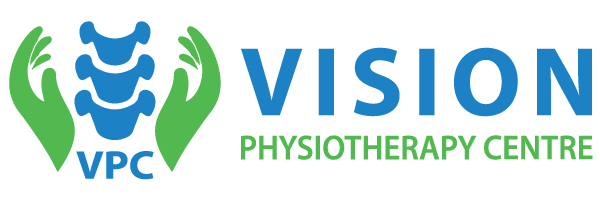Effective Osteoarthritis Treatment for Managing Pain and Inflammation
Osteoarthritis is a common form of arthritis joint disease that affects mass people in Bangladesh. It is characterized by the breakdown of cartilage in the joint, pain and stiffness, also limited mobility. Osteoarthritis can affect any arthritis joint in the body, but it most commonly affects the weight-bearing joints of the hip, knee, hands, and spine, causing pain and disability.
Symptoms of Osteoarthritis include joint pain, swelling, stiffness, and decreased range of motion. Osteoarthritis of the hands and wrists is also a common form of Osteoarthritis that can cause significant pain and discomfort for those affected. Treatment for Osteoarthritis in hands and wrists often involves a combination of strategies, including lifestyle modifications, physical therapy, medications, and sometimes surgery.
There are two types of Osteoarthritis in people’s bodies: primary and secondary. Primary Osteoarthritis affects various parts of the body, such as hip or knee osteoarthritis and hand osteoarthritis, while secondary Osteoarthritis occurs after an injury that causes inflammation in a joint. Osteoarthritis of Hands and Fingers causes pain, stiffness, and reduced range of motion. Osteoarthritis Finger Treatment often involves a combination of strategies.
The prevalence of people with arthritis is increasing, and it can significantly impact the quality of life. It can make it difficult to perform daily activities and lead to decreased independence and social isolation. It’s important to seek effective Osteoarthritis Treatment options for managing pain and inflammation in Osteoarthritis.

Sign and Symptoms of Osteoarthritis
Osteoarthritis is a types of arthritis of joint disease that occurs when the protective cartilage between the joints breaks down over time. This condition is widespread, especially in older adults and can affect millions of people worldwide. The following are some of the common signs and symptoms affected by osteoarthritis:
Pain:
Pain caused by osteoarthritis is a prevalent symptom. It is usually felt in the affected joint and tends to worsen during or after movement.
Stiffness:
Joint stiffness is another symptom of osteoarthritis that is frequently experienced. It may be more noticeable in the morning or after a period of inactivity.
Swelling:
Joint swelling is another symptom of osteoarthritis that is caused by inflammation. It may be more noticeable after prolonged periods of activity.
Reduced Range of Motion:
Osteoarthritis may lead to a decreased range of motion in the affected joint, which can make it challenging to perform simple activities such as bending or twisting.
Cracking or Popping Sounds:
As the joint cartilage wears down, it can cause a cracking or popping sound when the joint is moved.
Bone Spurs:
Osteoarthritis causes bone spurs to form around the affected joint. These can cause pain and further limit joint movement.
If you experience any of these symptoms, it is crucial to seek medical attention. While there is no known cure of risk factor for osteoarthritis, early diagnosis and Osteoarthritis Treatment can help manage the symptoms and improve your quality of life.
Managing Osteoarthritis Symptoms: From Pain Relief to Mobility Strategies
Osteoarthritis is a common condition that causes pain, stiffness, and reduced joint mobility. Physiotherapy is an effective way to manage the symptoms of osteoarthritis, from providing Pain Relief to improving overall mobility.
Physiotherapy treatments can include a range of techniques, such as exercise programs, physical activity, manual therapy, and electrotherapy. Exercise programs may focus on strengthening and stretching the affected joints, while manual therapy may involve hands-on techniques to help improve joint movement and relieve pain. Electrotherapy techniques, such as ultrasound or transcutaneous electrical nerve stimulation (TENS), can help alleviate pain and promote healing.
In addition to these specific treatments, physiotherapists can also provide strategies for managing osteoarthritis in daily life, such as advice on activity modification, weight management, and assistive devices to improve mobility. By working with a physiotherapist, individuals with osteoarthritis can find relief from their symptoms and improve their overall quality of life.


Non-Surgical Options for Osteoarthritis Treatment: Managing Pain and Inflammation
Osteoarthritis is a common joint disease that affects many people and requires proper Osteoarthritis treatment to manage its symptoms. It can cause pain, inflammation, and stiffness in the joints, making it challenging to perform everyday activities. While surgery may be needed for some people, there is also a non-surgical treatment regimen available to manage the pain and inflammation, such as physiotherapy. Physiotherapy involves exercises, stretches, and manual techniques to improve joint function, help reduce pain, and enhance mobility, making it a valuable non-surgical Osteoarthritis option.
A physiotherapist can customize an exercise program to meet an individual’s specific needs and goals for managing Osteoarthritis symptoms. Moreover, physiotherapy can educate individuals on lifestyle modifications like weight management and proper posture to better manage their Osteoarthritis symptoms, improving their quality of life.
New and Emerging Treatment Options for Osteoarthritis:
Managing Pain and Inflammation

One of the most promising areas is Platelet-Rich Plasma (PRP) Therapy: PRP therapy involves injecting a patient’s own concentrated platelets into the affected joint, which contains growth factors that can stimulate healing and tissue regeneration. PRP therapy has shown promising results in reducing pain and inflammation and improving joint function in osteoarthritis patients.
Stem Cell Therapy: Stem cell treatments involve injecting stem cells into the affected joint. These cells can differentiate into different types of cells, such as cartilage cells, and help to repair damaged tissue. While still considered an emerging therapy, preliminary studies have shown promising results in reducing pain and inflammation and improving joint function in osteoarthritis patients.
Shockwave therapy: The text discusses shockwave therapy, which is a non-invasive and promising medical service that uses high-intensity acoustic waves to treat various musculoskeletal conditions. The treatment works by increasing blood flow, stimulating tissue regeneration, and promoting healing. It has been found to be effective in reducing pain and inflammation, and many patients have reported significant improvements in their symptoms. Shockwave therapy is simple, non-invasive, and does not require any medication, making it a safe option for many individuals. Overall, shockwave therapy has shown great potential in treating various musculoskeletal conditions and is a valuable option for individuals seeking relief from their symptoms.
Another new treatment option for osteoarthritis pain is Cryotherapy. Cryotherapy is a new treatment option for Osteoarthritis pain. Cryotherapy involves exposing the affected area to extremely low temperatures for a short period, which reduces inflammation, swelling, and pain by reducing blood flow. Cryotherapy is a non-invasive and safe treatment option with few side effects, and it can be performed at specialized centres or home using cold packs or ice. It is essential to consult a doctor or a qualified healthcare professional before opting for Cryotherapy to determine its suitability. Cryotherapy has shown great potential as an innovative and promising treatment for osteoarthritis pain and other symptoms, which can improve symptoms an individual’s quality of life.
Acupuncture: Acupuncture is a form of traditional Chinese medicine that involves inserting thin needles into specific points on the body to stimulate the body’s natural healing processes. Some studies have shown that acupuncture can help to reduce pain and inflammation in osteoarthritis patients. It may work by stimulating the release of endorphins, which are the body’s natural painkillers, and by reducing inflammation in the affected joint. Acupuncture is a non-invasive therapy that can be used alone or in combination with other treatments, such as exercise and medication. While more research is needed to understand its effectiveness fully, acupuncture may be a promising new therapy for managing pain and inflammation in osteoarthritis.
Additionally, there are other new treatments, that as pulse electromagnetic field therapy (PEMF ): PEMF therapy is a non-invasive treatment that uses low-frequency electromagnetic waves to reduce pain and promote healing. It is used in various medical fields, believed to enhance circulation oxygenation and reduce inflammation in the body’s tissues. It has great potential in treating musculoskeletal conditions like osteoarthritis, fractures, and back pain. PEMF therapy is delivered through specialized devices that emit low-frequency electromagnetic waves and can be applied to specific areas or the whole body. PEMF therapy is a promising and innovative treatment that can improve quality of life. It’s important to keep in mind that while these new and emerging treatment options show promise, they are still in the early stages of development and may not yet be widely available. They may also have unforeseeable side effects that need to be considered before starting them.
Benefits of Physiotherapy in Osteoarthritis:
Physiotherapy can help to reduce pain in the affected joint. Physiotherapists use a combination of manual therapy, modalities, and exercises to manage pain.

Pain Relief
Physiotherapy can help to reduce pain in the affected joint. Physiotherapists use a combination of manual therapy, modalities, and exercises to manage pain.
Improved Mobility
Osteoarthritis can causes stiffness in the joints, limiting mobility. Physiotherapy helps to improve joint range of motion and flexibility through exercises and stretches.
Strengthening
Physiotherapy can help to strengthen the muscles around the affected joint, improving joint stability and reducing the risk of injury.
Posture Correction
Poor posture can worsen osteoarthritis symptoms. Physiotherapists can help to correct posture, improve joint alignment and reduce stress on the affected joint.
Education
Physiotherapists can educate patients about self-management strategies, such as exercise, diet, and lifestyle modifications, to manage painful osteoarthritis symptoms and prevent further deterioration.
Improved Quality of Life
Physiotherapy can help people with osteoarthritis improve their quality of life and maintain their independence by reducing pain, improving mobility, and increasing strength and flexibility.
Delaying or Avoiding Surgery
In some cases, physiotherapy can delay or even avoid the need for surgery for osteoarthritis. By strengthening the muscles around the affected joint, improving joint mobility, and reducing pain, physiotherapy can improve function and delay or avoid the need for joints. replacement surgery.
Customized Treatment:
Each patient with osteoarthritis is unique and has different needs. Physiotherapists can design a customized treatment plan for each patient, taking into account the patient’s age, health status, lifestyle, and specific symptoms. This personalized approach ensures that the patient receives the best possible care.
Improved Mental Health:
Living with chronic osteoarthritis pain and limited mobility can take a toll on a person’s mental health. Physiotherapy can improve a patient’s mental health by reducing pain and improving their ability to perform daily activities. Additionally, physiotherapists can provide emotional support, advice, and counseling to help patients cope with the challenges of osteoarthritis.
Prevention of Falls:
People with osteoarthritis are at an increased risk of falls due to joint pain and limited mobility. Physiotherapy can help to prevent falls by improving balance, strength, and flexibility. By reducing the risk of falls, physiotherapy can help to prevent injuries and improve a patient’s quality of life.
Why Do Osteoarthritis Patients Need Vision Physiotherapy Center Dhaka?
Individuals with osteoarthritis may require the services of an advanced physiotherapy center to manage chronic pain and improve their joint function. Vision physiotherapy centers in Banani offer specialized treatments, such as biologic therapies, platelet-rich plasma therapy, and stem cell therapy, which can target anti-inflammatory drugs and reduce pain in the affected joint. Additionally, physiotherapists at these centers can use manual therapy, exercise therapy, and modalities to improve joint flexibility, strength, and balance, while educating patients on proper body mechanics and joint protection to prevent further joint damage. Furthermore, a personalized exercise program can reduce the risk of falls and additional injuries, which is essential for individuals with osteoarthritis. Thus, visiting the Vision Physiotherapy Center in Uttara can be an effective option for individuals with osteoarthritis to receive tailored and comprehensive treatment that improves their symptoms and enhances their quality of life.

